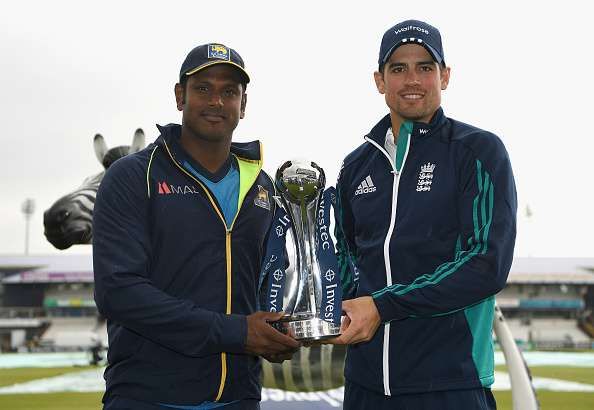
England vs Sri Lanka 2016: The pros and cons of the points system in cricket

Cricket, historically, has been a sport that has resisted change. The jury has always been divided on any cricketing innovation that has been suggested, and many of those innovations have fizzled out due to the lack of support from the practitioners, sponsors, and other personnel involved in the successful execution of the sport. Several examples can be quoted in this regard, such as the Champions League T20, the Asian Test Championship, the proposed World Test Championship amongst others.
The introduction of limited-overs cricket, coloured clothing in cricket matches, day-night ODIs, day-night Tests etc. had all faced similar resistance when they were about to be introduced. While discussions and debates are always welcome, what hurts the game the most is the pessimistic attitude of the guardians of the game, who at times vehemently oppose the introduction of anything new.
The Points System
Thankfully, the latest innovation of introducing a points-based system for deciding the outcome of bilateral cricket series has been given a green signal for its debut in international men’s cricket, having already been experimented with in women’s cricket to some success. Under this system, the result of a tour would be decided based on the total number of points accumulated across all formats played by the teams, and an overall winner would be declared instead of separate winners for separate formats.
This system has been put into practice for the first time in Sri Lanka’s ongoing tour of England and would also be followed when Pakistan tour England in July-August. Whether other cricketing nations would follow such a practice is, at the moment, unclear.
It has been suggested that a Test match victory would give the winning team 4 points while and ODI or a T20 victory would account for 2 points each. A drawn or tied test match would give 2 points to each team while a tied ODI or a match with no result would fetch one point each to the participating teams. A loss, be it in Tests, ODIs or T20s doesn’t account for any point. At the end of the tour, the team with a greater number of points would be declared the winner of the tour. At the outset, it looks to be something new to international cricket, along the lines of a similar system that has been in place in club football all over the world.
However, in cricket, the legacy of some of the marquee series, the difference between the three formats of the game, and the arrangement of the bilateral or multi-nation tours could be some crucial factors determining the viability and the feasibility of such a structure. Here, we try to find out and put into discussion the merits and demerits of putting into place such an arrangement in cricket.
Pros: Greater impetus to win, incentives for more Test matches and more
Talking about the advantages, the points system, if implemented on a long-term basis would give an extra impetus to teams to try and win the tour, instead of just the series. Teams that are good in limited-overs cricket, but not so in Test cricket would look to balance the equation by trying to play out the Tests and go for the kill in ODIs and T20s. West Indies, Sri Lanka, Bangladesh are examples of such nations, based on their recent form. Not only will it be a massive boost for their confidence, but it will also spur great competition in the longer format, to try and battle out the game. On the contrary, strong Test nations would look to win the Tests and gain an advantage over the opposition, as Test matches carry a greater weightage.
Secondly, the points system attaches importance to every format of the game to be played during a particular tour. Therefore, teams would look to field their full strength teams instead of second tier teams or teams without some of the key players who play in the longer format or vice versa. Examples of such teams are England, who have entirely different Test and limited-overs squads, the West Indies, who have been plagued by the conflict between the West Indies Cricket Board and the players, and Sri Lanka– who are undergoing an extended transition phase– and such teams would look to field their full-strength sides, if there is a deadlock after the completion of games in one particular format.

Thirdly, if an overall winner is decided based on the results of all games played during the tour, it would also be required to refine the rankings system currently in place. Teams and players are rated separately in all three formats and often it has been argued that the rankings do not reflect the exact state of a team’s cricketing standards or a player’s prowess with the bat or the ball. Putting in place a combined rankings system, that would incorporate performances in all three formats into consideration so as to rate the players according to their adaptability and performances across all formats of the game. This would bring out the true potentials of the cricketers and the ones who play all three formats of the game, and excel in each of them would deservingly be rated higher.
Fourthly, it may also address the issue of declining attendance in cricket matches, especially in Test matches. If the Test matches are held after the limited-overs fixtures, and the overall result has to be decided based on them, not only will the players have an incentive to try and win the series, but the audience too would be encouraged to support their team given the things that would be at stake. The anticipation of a defining result and the enthusiasm around it might just work in the game’s favour, and this system may address the long-standing problem of dwindling attendance in Test match cricket as it combined all three formats and leaves it to the teams to make a contest out of the tour.
Other than the aforementioned reasons, the points system would provide the bilateral tours with the much-needed structure and meaning, and would encourage the participating cricket boards to arrange for all formats to be played instead of just one or two of them. It has often been noticed that teams play only one particular format during a particular tour which is likely to change if there is an incentive to win the series by playing all three formats. It would also encourage teams to play more Tests, as the Test matches carry a greater weightage and in that manner, the disappearing attention from the longest format of the game may be reinstated. Very soon mandatory Test matches during a particular tour may become a reality.
